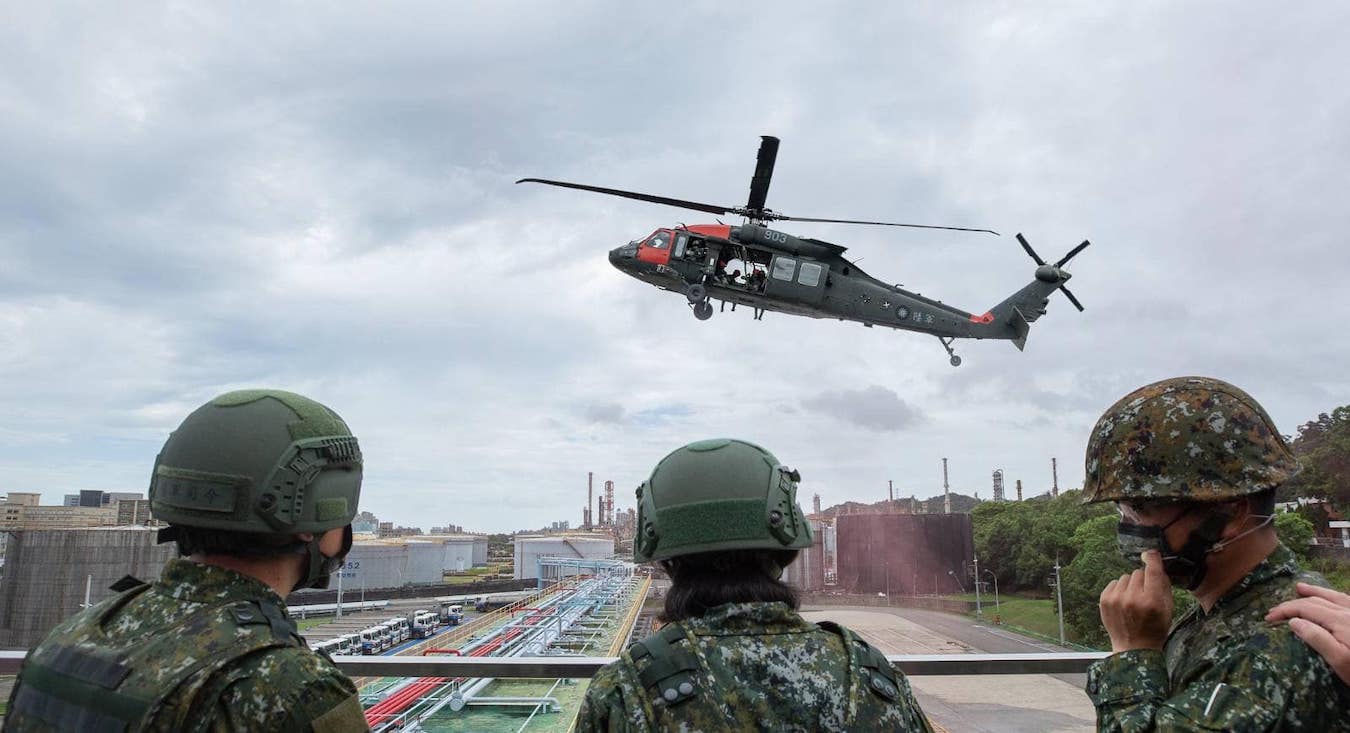by Brian Hioe
語言:
English
Photo Credit: Mil.ru/CC BY 4.0
THE PEOPLE’S LIBERATION ARMY set new records yesterday with the number of planes it deployed into Taiwan’s Air Defense Identification Zone (ADIZ). Taiwan’s Ministry of National Defense announced that 103 warplanes were detected around Taiwan in a 24-hour period yesterday. The ADIZ is the airspace in which planes normally identify themselves for security purposes. Aircraft also maneuvered in airspace southeast and southwest of the island.
Forty aircraft crossed the median line of the Taiwan Straits. Until fairly recently, Chinese military aircraft rarely crossed the median line of the Taiwan Straits, if at all. However, intruding into Taiwan’s ADIZ and crossing the median line of the Taiwan Straits has become increasingly common for Chinese warplanes. This is the second time in a week that forty aircraft have crossed the median line of the Taiwan Straits.
To this extent, flight paths around Taiwan are sometimes intended as a means of military signaling. This has been the case with drone flights circumnavigating Taiwan, for example.
103 PLA aircraft and 9 PLAN vessels around Taiwan were detected by 6 a.m.(UTC+8) today. R.O.C. Armed Forces have monitored the situation and tasked CAP aircraft, Navy vessels, and land-based missile systems to respond these activities. pic.twitter.com/YjebwioA4v
— 國防部 Ministry of National Defense, R.O.C. 🇹🇼 (@MoNDefense) September 18, 2023
Tweet by the Ministry of National Defense about the flight incursions yesterday
The air intrusions took place after the People’s Liberation Army Navy (PLAN) finished drills with its aircraft carrier, the Shandong, in the western Pacific. These drills took place across two days and were designed to practice area denial capabilities. While the naval exercises were among the largest drills conducted by the PLAN to date, some experts took the view that the intended audience for these drills was not Taiwan, but the US. 20 PLAN vessels were detected by 6 AM on September 12th, a new record.
It is expected that China may continue efforts to militarily pressure Taiwan. Taiwanese military officials stated yesterday that they expect to see more Chinese aircraft today. By 6 AM today, 55 aircraft and 7 PLAN vessels were detected.
China ratcheting up such exercises is aimed not just at psychologically intimidating Taiwan, but at simulating military actions such as a blockade, so as to give its troops greater experience at actually carrying out such maneuvers. Nevertheless, for the most part, such upticks in Chinese military drilling do not cause panic in Taiwan.
Taiwan has had decades of Chinese military threats, as a result of which such threats are not seen as out of the norm. To this extent, though such drills are a front-page news story, they are merely one among many stories, with election coverage continuing to constitute a large part of the news cycle.
At the same time, it is unclear as to what China was aiming to accomplish with its military drills. The drills did not seem to be a response to any particular political action, such as the live-fire drills that followed after vice-president and DPP presidential candidate William Lai transited the US last month, or the meeting between US Speaker of the House Kevin McCarthy and Taiwanese president Tsai that took place in April.
 Photo credit: Tsai Ing-wen/Facebook
Photo credit: Tsai Ing-wen/Facebook
Ironically, the drills occurred at the same time KMT presidential candidate Hou You-yi is visiting the US. Likewise, when former president Ma Ying-jeou of the KMT visited China as the first former ROC head of state to visit since the Chinese Civil War, this did not prevent China from launching military drills in the same timeframe. Although the KMT has historically framed itself as the only party in Taiwan able to maintain stable cross-strait relations, China can unwittingly undercut this claim because it does not decrease the level of military drills it carries out in response to the KMT’s actions.
It could be that China just aims to intimidate Taiwan or its main aim is to provide more training for its troops. Or it could be that, as before, the target audience for its drilling is actually the US. Indeed, China’s drills in response to Lai’s transit were relatively mild, as a result of which it was thought that China was hoping to come off as moderate rather than inflammatory. China may be aiming to go in the other direction now, even if this could potentially have the effect of driving the Taiwanese electorate in the direction of the DPP, if they are outraged by Chinese drilling.
After all, this has taken place during past incidents in which Xi Jinping outraged Taiwanese after stating that the use of force was still on the table for unifying Taiwan and China. The brutal repression of protests in Hong Kong, too, had the effect of cementing views in Taiwan against China. And, though the Taiwanese public has mostly been unphased by Chinese drilling in the past, if this changes, it might not necessarily be in China’s favor, but serve to consolidate views against China.

